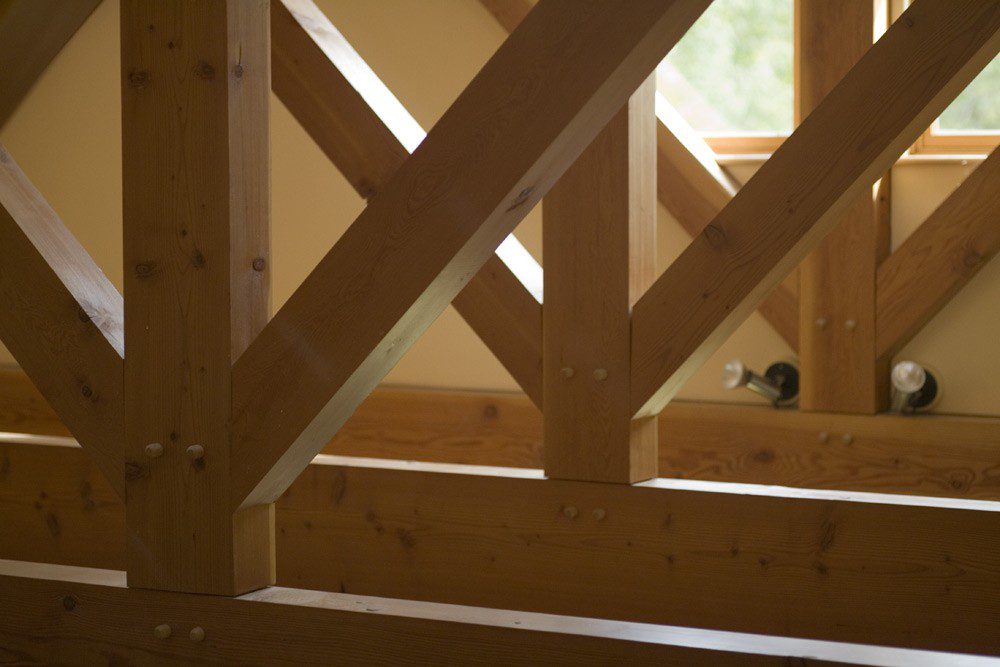
The people who make the decision to design and build a custom home for themselves, we have observed, share some interesting qualities. First of all, they have a refined sensitivity to the world around them.
Our customers, as a group, are more attuned to their environment. They notice what is around them. They appreciate the beautiful. They are more easily annoyed by the ugly. Home is an important place for our customers. In fact, it is the most important place. In many cases, our customers spend much more time at home than most people. Many have said that, once they move into their Sunlight home, they will not move again...ever.
These kind of people...our customers...(you!)...have specific design requirements and creative ideas for their new home, which is very helpful to us! The more information we can get from you about the wants and needs in your new home, the better.
To add to the personal design work you have probably already begun, we would like you to think about your new home from the following perspective:
Scrutinize Your Current Home
Starting noticing every task you perform in your daily routine and ask yourself, "Is this space designed to best facilitate this task?” Why or why not? Question everything. Discuss your observations with your partner or family. What do they think?
As you begin doing this, you will notice that some of your daily routines are awkward, difficult, and even painful to perform. Could better design streamline the task? How? We are looking for the problems and we will work with you to find solutions. The tasks you perform frequently are most important to address first. Here is an example:
Design Details
The 4'2" Sushi Chef:
If you are short (or tall) and love to cook, wouldn't it be nice if the countertops (at least some of them) fit you perfectly so you do not get a crick in your neck chopping veggies or rolling dough? It is as easy as realizing this and letting your designer know.
The Head Dippers:
Some people dip their heads in the bathroom sink in the morning to wet or wash their hair. If you are one of them, next time you stick your head in the sink, ask yourself, "Is the sink the right height or does this strain my back? How will a similar setup be for me in 10 years? What would be the ideal height for this sink for my body? Do I feel like I could break my nose or a tooth every time I stick my head here? What would be the ideal sink size? (Measure the sink then note the ideal size) What about adding a hand sprayer or a high-arched faucet? A towel bar within arms reach maybe?
The Morning Showerer:
So you shower in the morning, do you? Are you an early riser who is awake and whistling in the shower at dawn? If so, perhaps you would like east light for a sunny morning shower and a bright, warm place to dress for the day. Cable TV for the news? Music? What is your lifestyle?
Or do you wake up slowly and shuffle around like a zombie until you have had your coffee and an hour to wake up? Would a darker bathroom be better for you; perhaps in a room with only a skylight or high north windows? How much room do you need in the shower? Do you need a shower seat? What other amenities would enhance your morning shower experience? A drying bench?
Gather Ideas + Think About Them

If you begin to scrutinize your activities and how your home works now, you will come up with many excellent design details to fine tune your new home.
Gather ideas from friends and family. Ask them what features they would like in a new home. As you get in this mode, the ideas will start pouring in. Write them down, discuss them with your partner then bring them up in your design conversations with us. Take photos, when possible, to illustrate your ideas. Put a pen and paper on your nightstand. You will certainly wake up with an idea before this is over.
The more you personally interact with your home, the more important these subtle design features become. It may be the case in your home that one adult is the home caretaker more so than the other. If you are the one who does not do much of the daily upkeep, we suggest that as research you do some of these tasks yourself in the coming weeks. You will learn some things and you will have some important design input if you do. As we said before, there is nothing quite like experience!
Many times the design details that result from this exercise do not cost more. Our customers say that it is the daily, long-term pleasure you derive from having thought of these details that makes building your own custom home really special.
Guiding Principles
While designing your home, these guiding principles can be helpful in determining the placement and height of work spaces, appliances, and furniture. While these rules can give you a basis from which to begin your own design, they should not take the place of actually trying the sizing out for yourself.
Think about the tasks you perform daily. What counter/desk/workbench height would be best for you while performing these tasks? Build a mock-up and try it for yourself. Pile books, boxes or boards on a stool, chair or existing counters and try your tasks at different heights. Create a kitchen and bathroom sink at various heights and see what feels most comfortable. If two people of different heights perform the same tasks in your home, you might want to consider two different work stations or a compromise in the height so both are comfortable.
Keep in mind that, as in every other aspect of custom design, there will be competing priorities. Prepare yourself to stay flexible! By considering this information then applying it to your individual set of priorities, you will be able to get the best combination of ideas and features, given your particular project.
Dishwasher and oven heights can also be altered to avoid bending over too far. Cabinet heights can be customized to fit your size as well. Time spent analyzing your lifestyle will be rewarding later!
Stairs
Stair treads (the surface you step on) are usually 10-12" deep and risers (the vertical piece) is 5.5 to 7.5" high. Unless space is a problem, wider treads and shallow risers make a more comfortable stair. This type of stair does use more space, however, and space is expensive. Often a compromise is necessary.
The standard length of a one-story staircase is about 10 feet, with a 1 foot vertical rise for each foot of length. This can be modified a bit if necessary. For a U-shaped stair, double the amount of space required. A U- or L- shaped stair is safer and more visually/spatially interesting.
Here are some standard measurements:
Kitchen Cabinets
- Lower cabinets 36"h x 24"d
- Upper cabinets 24"hx12"d (so shelf inside is at eye level)
- Toe space 3"
- Space between lower and upper cabinets 20-24"h
- Floor space between cabinets 36-48"
Counter Heights
- Standard is 36"h.
- Taller people prefer counters between 42 and 45"h.
- Bar height is 42"h with a 30" stool.
- Need 24"w and 12"d space for knees.
- 30"h is recommended for counters or tables where people sit.
Microwave
- Place microwave approximately 42" off floor Place microwave so that heated food is no higher than 3 inches below shoulder height, or 2" below primary user's elbow to 10" above it.
- Leave 15-18" of counter space next to the microwave for setting hot dishes (heat resistant surface?)
- Placing the microwave close to the refrigerator and above a 36" wide counter makes a great fast food center for kids.
Dishwasher
- Place within 36" of sink for maximum efficiency.
- Allow 21" of standing room between the dishwasher and adjacent counters, other appliances and cabinets.
Cooktop
- Leave at least 18-24" of counter space on each side of the cooktop. If cooktop is in an island, leave at least 12". (Heat resistant surface?)
- Leave at least 24-36" of clearance between cooktop and overhead exhaust vents or cabinets.
- Leave 16" of clearance between the center of a burner and a wall or cabinet.
- Leave 14" of clearance between the center of a burner and a turn in the countertop.
- Don't put a cooking surface below an operable window unless the window is over 3" behind the cooking unit or 24" above it.
- Cooktop height should be so that the main (and/or shortest) cook can easily look into large pot.
Wall Oven
- Height should leave the open door 5-7" below cook's elbow.
Refrigerator
- Standard size 28-30"w
- Side-by-side 30-36"w
- Leave at least 15" of counter space next to the handle side of the refrigerator (for loading and unloading).
Sink
- Leave 36" of counter space on each side of the sink, if possible. Minimum of 24" on the dishwasher side and 18" on the other.
- Leave 2" between the front edge of the sink and the edge of the counter. Leave 22" of space between the sink rim and an overhead cabinet.
- Place the center of the sink bowl at least 14" from the turn of a counter. Vegetable sink: allow a minimum 18" of counter space on one side, and 3" on the other.
Baking Center
- Work Surface should be at least 36".
- A counter that is 3-6" lower than a standard counter is good for rolling and kneading dough.
Office Ergonomics
- While working at a computer your ears, shoulders and hips are in vertical alignment. Arms are bent about 90 degrees at the elbows, so your forearm is parallel to the floor. The monitor screen should be 18" to 24" from your eyes and slightly below eye level. Your legs should be bent at 90 degrees so that your thighs are parallel to the floor. An adjustable foot rest can help here.
- Desks are usually 29" to 30" high.
- Keyboards should be lower than desk height and able to be adjusted for the user.
- File Cabinets (Vertical) 24"28" deep about 15" wide. Cabinets for legal documents, 19" wide.
- File Cabinets (Lateral) 30"48" wide and 15'20" deep.
- Both varieties of file cabinets are available in 2 and 5 drawer heights.
Bathrooms
- Shower head 6'7"
- Shower rod 6'6"
- Soap holders 48"
- Towel bars 48"
- Toilet paper holder 24"
- Tub deck height 18"
